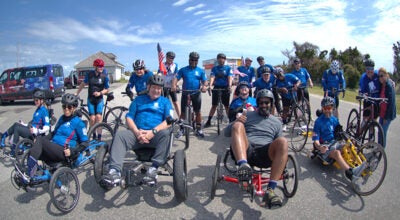Population growth gives North Carolina a 14th US House seat
Published 8:01 am Tuesday, April 27, 2021
|
Getting your Trinity Audio player ready...
|
By Gary D. Robertson, Associated Press
North Carolina will gain another seat in Congress for the next 10 years, the U.S. Census Bureau announced Monday, the result of a steadily growing population as people arrive for jobs and retirement.
The additional U.S. House seat, the 14th for North Carolina, marks the third time in the past four census cycles that the state will have increased the size of its congressional delegation. North Carolina received a 12th seat after the 1990 census and another after the 2000 release.
The Census Bureau said North Carolina’s resident population was 10,439,388 as of April 1, 2020, up 9.5% from the 9,535,483 people counted as living in the state a decade earlier. North Carolina was the ninth largest state, up from 10th a decade ago.
The state’s apportionment population, which adds overseas workers and their families who are from North Carolina and is used to distribute U.S. House seats, was slightly higher at 10,453,948.
Estimated population growth over the past 10 years has been concentrated in Wake and Mecklenburg counties, both of which had more than 1.1 million people in the bureau’s 2019 population estimates. The two counties account for nearly half the state’s overall population growth over the past decade, said Rebecca Tippett, director of Carolina Demography, a research consulting group affiliated with the University of North Carolina at Chapel Hill.
The population distribution data needed for redistricting won’t be available until late summer or early fall. But based on estimated population growth, Tippett said a 14th seat would likely be drawn in an urban or suburban area within the Piedmont crescent — an area stretching from Charlotte north and east to Greensboro and Raleigh.
The region’s population growth has far outpaced rural and eastern North Carolina, which could see their influence decline.
Republicans currently hold eight of the state’s 13 U.S. House seats. Democrats gained two seats during the 2020 elections — a shift largely attributed to the results of redistricting litigation.
The General Assembly redrew the congressional map in late 2019 because state judges declared that it likely included unlawful partisan gerrymanders favoring the GOP. The new boundaries shifted Greensboro-area and Raleigh-area districts to seats favoring Democrats. Now the state House and Senate — still in Republican control — will redraw the map again.
Redistricting maps aren’t subject to a veto by Democratic Gov. Roy Cooper. But any map approved by the legislature is likely to be challenged in court by Democrats or allied groups, whether on partisan or racial grounds.
“In order to avoid illegal map-rigging, the redistricting process in 2021 must be transparent, nonpartisan and include robust public input — and be completely free from gerrymandering,” Common Cause North Carolina executive director Bob Phillips said in a news release after Monday’s announcement. Common Cause was a plaintiff in both federal and state partisan gerrymandering lawsuits in the 2010s.
Republicans might find it difficult to create a new 14th district in the Piedmont that favors their party and passes legal muster, especially as the politics and voter preferences within the region’s largest cities — Charlotte, Raleigh, Greensboro and Durham among them — are shifting to the left.
Tippett said North Carolina’s population growth is driven by people who arrive for work or to attend college and then remain after graduation. Retirees also are flocking to the state, as well as baby boomers from the Northeast and Midwest who want to live closer to adult children already in North Carolina, she said. Others are attracted by the temperate climate and relatively affordable home prices.
“We continue to be a place where people move here from other places and countries, and we have more births than deaths,” Tippett said.
Mecklenburg County’s growth is linked to Charlotte and the area’s banking, airline and other corporate hubs. Wake County, home of Raleigh, has been historically connected to state government, but the continued technology sector growth associated with Research Triangle Park has diversified the county’s economy.
Suburban and exurban counties near Mecklenburg and Wake resumed robust population increases in the late 2010s after slowing following the 2008 recession, Tippett said.
RECENT HEADLINES:





